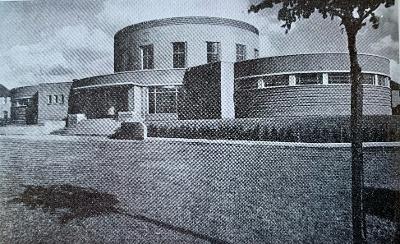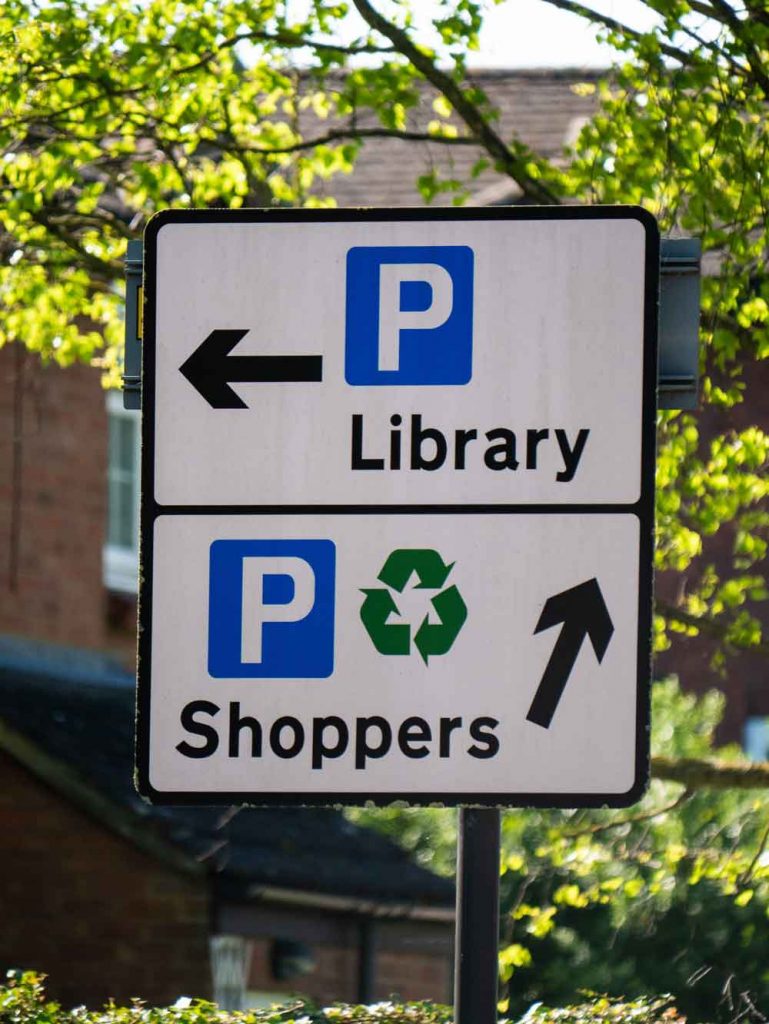
Those who know me or who’ve read my December 2020 blog may be a little surprised to see me focusing on library buildings, but bear with me: despite the startling growth and success of digital and online library use, I’m the last to suggest that library services don’t also need a physical presence and some sort of building base. So this month I’d like to ask, “What is the ideal location for a public library?” and to look at some of the past and current thinking on this.
The first public libraries as we know them today in the UK were gradually opened from 1850 onwards. For the first seventy or so years local authorities and their benefactors – chief among them Andrew Carnegie and John Passmore Edwards – thought that the library should be a central part of a display of civic pride, along with the municipal offices or town hall, and often the public baths

In the years leading up to and following WW2 there was a greater focus on branch library growth in local communities, wherever possible in a prominent position though usually off the main high street due to site availability and costs.

Then during the last two decades of the C20, and start of the C21, many library planners – yes me among them! – saw great advantage in the library being located within a main retail centre. The bigger the better, along with a desire to make the library appeal to a wider audience by looking as un-municipal as possible.

Alongside this began a growing trend to co-locate the library along with other services, be these council services, leisure centres, health centres, arts and entertainment venues and of course colleges and schools.
Which brings us up to 2021 and back to my question, “What is the ideal location for a public library in the post-Covid 2020s and beyond?”. Where does all this past experience take us? And when the focus on Covid-19 starts to fade – as we all hope it will – what longer-term impact will that have had on public library service delivery?
To which I don’t have a pat answer, but I would like to highlight some key considerations for any local authority contemplating opening a new library or reorganising the current library network:
- Leaving aside an ongoing focus on online and virtual library use, many people will still wish to combine their physical visit to the library with some other activity.
- But as we watch the closure of one after another of the big retail names that have been such a familiar part of our lives the future of shopping centres seems in doubt, so is that now the best location for a library? On the other hand, maybe in some instances a library service could be provided from one of those empty retail units and help to recreate a sense of community.
- Perhaps the answer is therefore shared service provision with health centres, sports centres, arts centres, access points for council services and so on … but with the caveat to really integrate service delivery with the library service! There are countless examples today of co-location of libraries, but I can count on one hand the instances where there has been any real attempt to co-deliver.
- And in design terms the key will be flexibility so that use of the building can be modified as service priorities change, not only for the library service but also the other services that may share the premises. Many of those early municipal libraries were left behind when the council offices relocated, and the baths were replaced by a new leisure centre. Centres of retail activity shift and stores close over time, leaving the library behind: even one of the otherwise very successful Idea Stores in Tower Hamlets lost the supermarket next to which it was located.
- And the key to that last point will be finding solutions that respond to local community need and not a one-size fits all hierarchy of central, main branch, small branch etc. In particular, observing the impact of Covid-19, how great is the future need for the traditional type of large central library, attracting vast numbers of people?

My last plea is for greater recognition of the role a library service can have in helping to deliver a wide range of local priorities. Library service staff have demonstrated this to great effect during the Covid-19 pandemic, usually much to the surprise of the decision-makers in the council and often to themselves as well! I’ve been noticing the number of recent news reports and articles – in the UK and internationally – picking up on the wider social role of libraries. Just a few examples are in New York, in Wellington, New Zealand, and closer to home in the UK.
And with that last point in mind please, please could local authorities begin to pro-actively involve library service managers in their discussions about wider community needs and the search for new, different and exciting opportunities to re-provide along with other services and organisations? Far too many UK public libraries, even the newer ones, are where they are because somebody in the council came up with a development deal and shoved the library into the package, leaving the service manager to make the best of it or else seem ungrateful and never be offered anything again.
There are probably more questions than answers in all that, but I hope some of it may provoke a few conversations in the queue to use the office photocopier (will that ever be a thing again?!).

As regular readers know, I like to also take a glance backwards in the library world, so I’ll leave you with an example of perhaps taking innovation in service provision to too much of an extreme. ‘Mad J… S….’ (as he was mildly affectionately known) was the chief librarian of an an English southern county in the 1960s and early 1970s, who came up with the idea of sharing shelving and stock between two library buildings. No, not a mobile library, and not what has in more recent years been known as ‘circulating stock’. No, Mad J.S. came up with the idea that all the shelving would be on wheels and that half way through the week it would all be wheeled out onto a lorry, books and all, taken to the second site and used there, and then taken back again for the next week. The staff went too! As I recall, the idea was actually trialled between two sites but rapidly abandoned. Presumably, potential users who came on the ‘wrong’ day complained too much that they’d been left to gaze through the windows at an empty building muttering, “It’s Tuesday so the library must be in …”
Geoff Allen is a senior associate consultant with Activist Group. The views expressed in this blog are his own and do not necessarily reflect the opinions of Activist.
